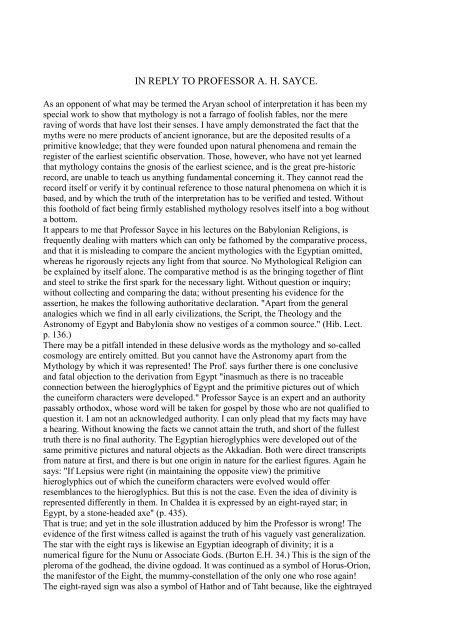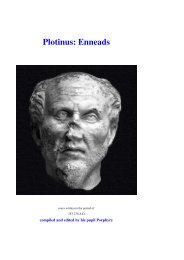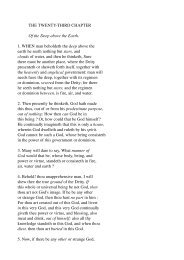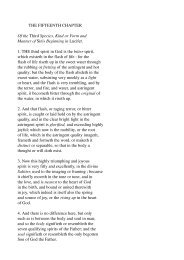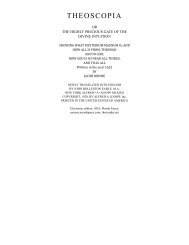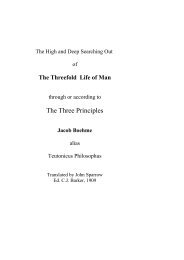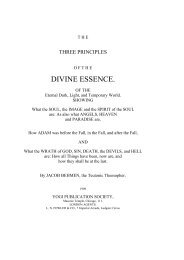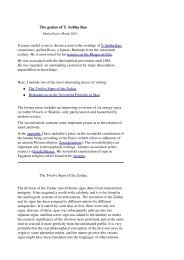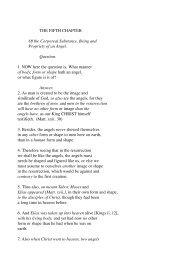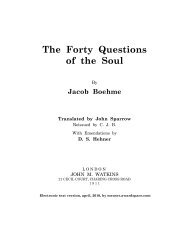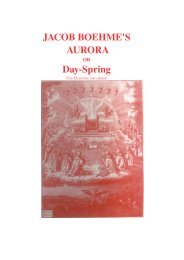Gerald Massey's Lectures - Society in evolution - Awardspace
Gerald Massey's Lectures - Society in evolution - Awardspace
Gerald Massey's Lectures - Society in evolution - Awardspace
You also want an ePaper? Increase the reach of your titles
YUMPU automatically turns print PDFs into web optimized ePapers that Google loves.
IN REPLY TO PROFESSOR A. H. SAYCE.<br />
As an opponent of what may be termed the Aryan school of <strong>in</strong>terpretation it has been my<br />
special work to show that mythology is not a farrago of foolish fables, nor the mere<br />
rav<strong>in</strong>g of words that have lost their senses. I have amply demonstrated the fact that the<br />
myths were no mere products of ancient ignorance, but are the deposited results of a<br />
primitive knowledge; that they were founded upon natural phenomena and rema<strong>in</strong> the<br />
register of the earliest scientific observation. Those, however, who have not yet learned<br />
that mythology conta<strong>in</strong>s the gnosis of the earliest science, and is the great pre-historic<br />
record, are unable to teach us anyth<strong>in</strong>g fundamental concern<strong>in</strong>g it. They cannot read the<br />
record itself or verify it by cont<strong>in</strong>ual reference to those natural phenomena on which it is<br />
based, and by which the truth of the <strong>in</strong>terpretation has to be verified and tested. Without<br />
this foothold of fact be<strong>in</strong>g firmly established mythology resolves itself <strong>in</strong>to a bog without<br />
a bottom.<br />
It appears to me that Professor Sayce <strong>in</strong> his lectures on the Babylonian Religions, is<br />
frequently deal<strong>in</strong>g with matters which can only be fathomed by the comparative process,<br />
and that it is mislead<strong>in</strong>g to compare the ancient mythologies with the Egyptian omitted,<br />
whereas he rigorously rejects any light from that source. No Mythological Religion can<br />
be expla<strong>in</strong>ed by itself alone. The comparative method is as the br<strong>in</strong>g<strong>in</strong>g together of fl<strong>in</strong>t<br />
and steel to strike the first spark for the necessary light. Without question or <strong>in</strong>quiry;<br />
without collect<strong>in</strong>g and compar<strong>in</strong>g the data; without present<strong>in</strong>g his evidence for the<br />
assertion, he makes the follow<strong>in</strong>g authoritative declaration. "Apart from the general<br />
analogies which we f<strong>in</strong>d <strong>in</strong> all early civilizations, the Script, the Theology and the<br />
Astronomy of Egypt and Babylonia show no vestiges of a common source." (Hib. Lect.<br />
p. 136.)<br />
There may be a pitfall <strong>in</strong>tended <strong>in</strong> these delusive words as the mythology and so-called<br />
cosmology are entirely omitted. But you cannot have the Astronomy apart from the<br />
Mythology by which it was represented! The Prof. says further there is one conclusive<br />
and fatal objection to the derivation from Egypt "<strong>in</strong>asmuch as there is no traceable<br />
connection between the hieroglyphics of Egypt and the primitive pictures out of which<br />
the cuneiform characters were developed." Professor Sayce is an expert and an authority<br />
passably orthodox, whose word will be taken for gospel by those who are not qualified to<br />
question it. I am not an acknowledged authority. I can only plead that my facts may have<br />
a hear<strong>in</strong>g. Without know<strong>in</strong>g the facts we cannot atta<strong>in</strong> the truth, and short of the fullest<br />
truth there is no f<strong>in</strong>al authority. The Egyptian hieroglyphics were developed out of the<br />
same primitive pictures and natural objects as the Akkadian. Both were direct transcripts<br />
from nature at first, and there is but one orig<strong>in</strong> <strong>in</strong> nature for the earliest figures. Aga<strong>in</strong> he<br />
says: "If Lepsius were right (<strong>in</strong> ma<strong>in</strong>ta<strong>in</strong><strong>in</strong>g the opposite view) the primitive<br />
hieroglyphics out of which the cuneiform characters were evolved would offer<br />
resemblances to the hieroglyphics. But this is not the case. Even the idea of div<strong>in</strong>ity is<br />
represented differently <strong>in</strong> them. In Chaldea it is expressed by an eight-rayed star; <strong>in</strong><br />
Egypt, by a stone-headed axe" (p. 435).<br />
That is true; and yet <strong>in</strong> the sole illustration adduced by him the Professor is wrong! The<br />
evidence of the first witness called is aga<strong>in</strong>st the truth of his vaguely vast generalization.<br />
The star with the eight rays is likewise an Egyptian ideograph of div<strong>in</strong>ity; it is a<br />
numerical figure for the Nunu or Associate Gods. (Burton E.H. 34.) This is the sign of the<br />
pleroma of the godhead, the div<strong>in</strong>e ogdoad. It was cont<strong>in</strong>ued as a symbol of Horus-Orion,<br />
the manifestor of the Eight, the mummy-constellation of the only one who rose aga<strong>in</strong>!<br />
The eight-rayed sign was also a symbol of Hathor and of Taht because, like the eightrayed


